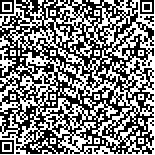本文已被:浏览 442次 下载 436次
Received:August 04, 2022 Published Online:March 20, 2023
Received:August 04, 2022 Published Online:March 20, 2023
中文摘要: 目的 探讨“去通道”转运诊疗模式在急性缺血性脑梗死治疗中的应用效果。方法 采用回顾性队列研究。选择2018年12月至2019年11月南充市中心医院收治的145例急性缺血性脑梗死患者作为对照组,选择2020年3月至2021年12月南充市中心医院收治的188例急性脑卒中患者作为研究组。其中研究组采用“去通道”转运诊疗模式进行救治,而对照组采用标准流程进行救治。比较两组患者急救流程的优化效果,并记录两组患者的溶栓效率、溶栓前后NIHSS评分、住院时间以及随访90 d的预后良好率。结果 研究组患者被接诊到溶栓时间、抽血、血液检查、家属决策时间,以及患者就诊至急诊医生初始评估时间、卒中专业医生接诊时间、CT和实验室检查报告时间、用药时间均明显短于对照组(P<0.05)。研究组溶栓后NIHSS评分低于对照组,且溶栓有效率高于对照组(90.72% vs 82.07%,P<0.05)。研究组的住院时间明显短于对照组,且随访90 d的预后良好率高于对照组(42.55% vs 28.97%,P<0.05)。结论 “去通道”转运诊疗模式可缩短急性脑卒中患者就诊至完成治疗的时间,提高溶栓治疗时效性,从而提高患者溶栓效率,改善预后。
Abstract:Objective To explore the practical results of “de-channel” transport diagnosis and treatment mode in the treatment of acute ischemic cerebral infarction. Methods A retrospective cohort study was used. The patients with acute ischemic cerebral infarction admitted to Nanchong Central Hospital were selected, 145 patients from December 2018 to November 2019 were divided into control group, and 188 patients from March 2020 to December 2021 were divided into study group. Among them, the study group adopted the “de-channel” transport diagnosis and treatment mode for treatment, while the control group adopted the standard process for treatment. The optimization effect of the first aid process of the two groups of patients was compared, and the thrombolytic efficiency of all patients, the NIHSS score before and after thrombolysis, the length of hospitalization and the good prognosis rate of 90-day follow-up were recorded. Results The door-to-needle time (DNT), blood sampling, blood examination, family decision-making time, the initial evaluation time from the patient to the emergency doctor, the reception time of the professional stroke doctor, the time of CT and laboratory examination report, and the time of medication in the study group were significantly shorter than those in the control group (P<0.05). NIHSS score after thrombolysis of the study group was lower than that of the control group, and the effective rate of thrombolysis was higher than that of the control group (90.72% vs 82.07%, P<0.05). The hospital stay of the study group was significantly shorter than that of the control group, and the good prognosis rate of the 90-day follow-up was higher than that of the control group (42.55% vs 28.97%, P<0.05). Conclusion The “de-channel” transport diagnosis and treatment mode can shorten the time from the treatment of acute stroke patients to the completion of treatment, improve the timeliness of thrombolytic therapy, thereby improving the thrombolytic efficiency of patients and improving the prognosis.
keywords: Acute stroke “De-channel” transport diagnosis and treatment mode Intravenous thrombolysis Green channel First aid process Therapeutic effectiveness
文章编号: 中图分类号:R743.3 文献标志码:A
基金项目:四川省基层卫生事业研究中心立项项目(SWFZ19-Q-16)
引用文本:
